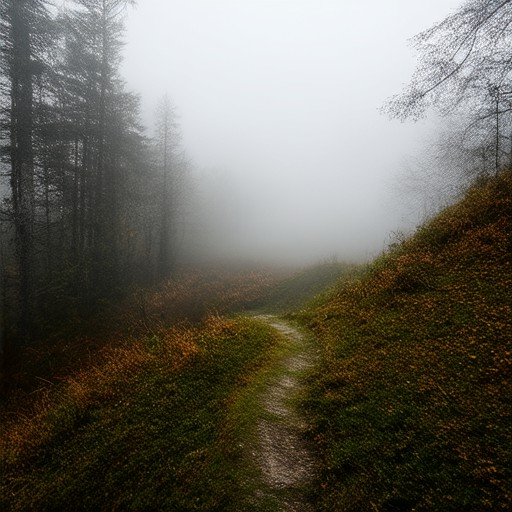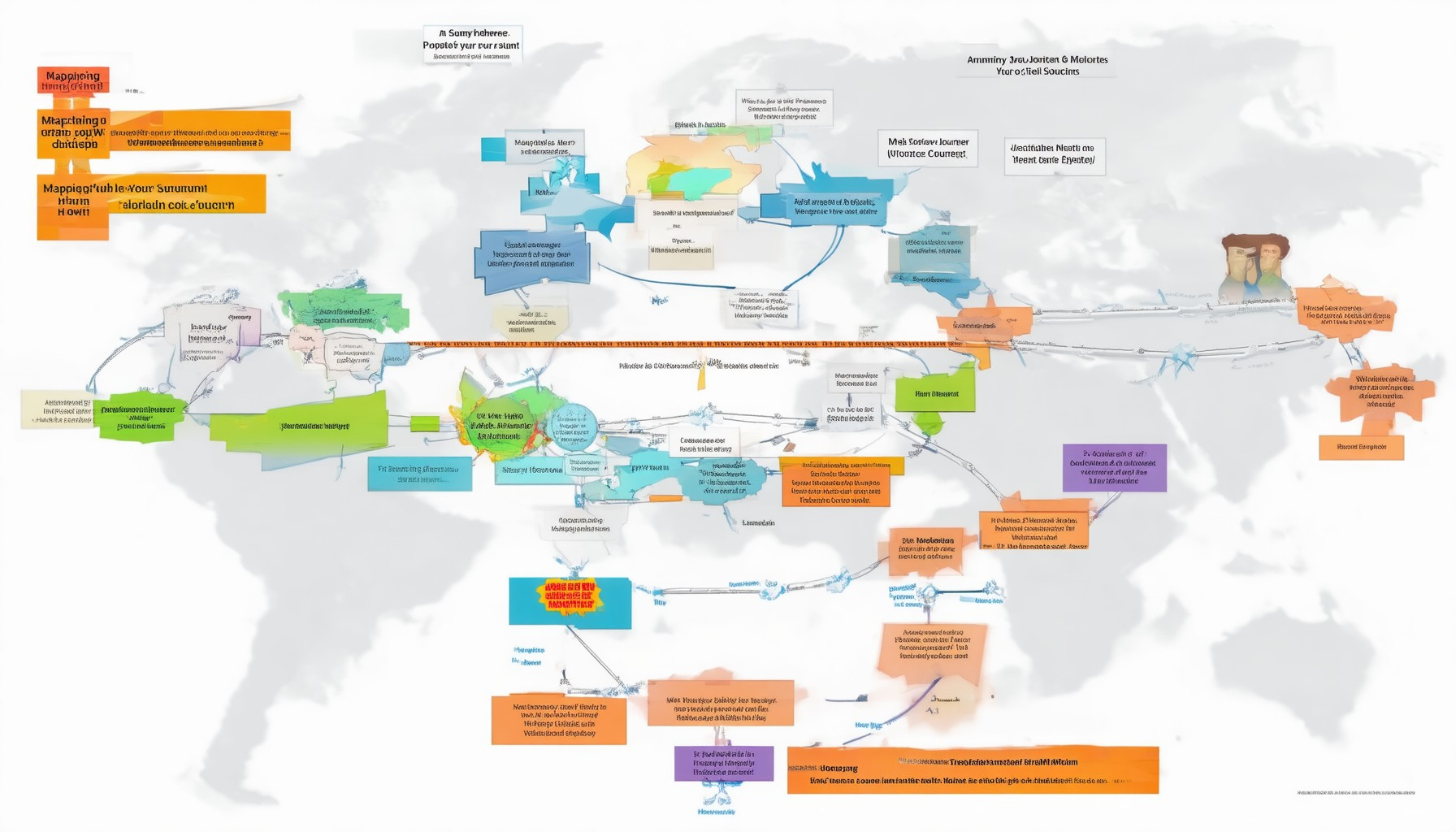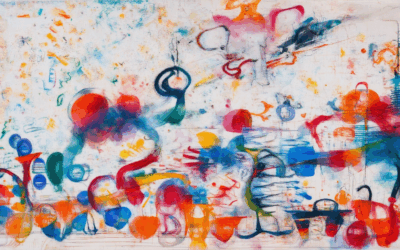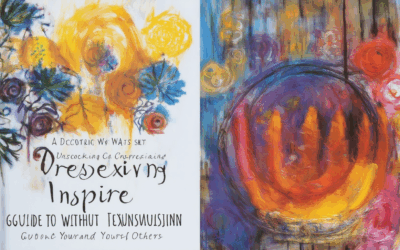The art of crafting a compelling narrative is a journey that every writer embarks on, seeking to capture the essence of their vision while resonating with readers on a profound level. For those navigating the complexities of a creative narrative journey, the Hero’s Journey structure offers a powerful framework to organize their story, ensuring it unfolds seamlessly while reflecting the depth of their creativity. Whether you’re penning a tale of adventure, exploring complex characters, or delving into personal growth, understanding the structure behind your narrative can transform your storytelling capabilities. By mastering the Hero’s Journey, writers can unlock the potential of their creative narratives, turning ordinary stories into extraordinary ones that leave a lasting impact on their audience. This guide will walk you through the intricacies of the Hero’s Journey, providing insights and practical applications to elevate your creative narrative journey.

Journey Narrative Explained
A journey narrative is a type of story that follows a sequential, chronological structure, allowing events to unfold naturally in a linear progression. These stories often follow a clear beginning, middle, and end, making them easy to plot on a timeline or visualize on a story map. The narrative typically moves forward without deviating significantly from the central theme or plotline.
Key Characteristics of Journey Narratives:
- Linear Structure : Events progress logically from one point to the next, without jumping between different times or locations unless purposeful.
- Chronological Order : The story unfolds in the order of events, often mirroring the passage of time.
- Focus on Progression : The narrative emphasizes movement and development, often highlighting growth, learning, or transformation experienced by the protagonist.
Examples of Journey Narratives:
- Literary Works :
- Alice in Wonderland by Lewis Carroll: Alice’s journey through the magical world of Wonderland is a classic example of a journey narrative, following her initial fall down the rabbit hole to her eventual return home.
- Odyssey by Homer: Odysseus’s ten-year voyage home from the Trojan War is a prime example of a journey narrative, emphasizing his struggles and eventual resolution.
- Real-Life Journeys :
- A traveler’s account of a solo trip around the world: This narrative documents the journey chronologically, highlighting key experiences and destinations visited along the way.
Importance of Journey Narratives:
- Clarity and Simplicity : Linear storytelling makes it easier for readers to follow and engage with the narrative.
- Thematic Consistency : Journey narratives often revolve around a central theme or lesson, allowing for deeper exploration of ideas.
- Connection to Self : Readers can relate to the emotional and psychological journey of the protagonist, fostering empathy and introspection.
Creative Applications:
- Storytelling : Journey narratives are ideal for sharing personal experiences, historical accounts, or fictional tales.
- Creative Writing : Authors can use this structure to craft compelling stories that guide readers smoothly from one scene to the next.
- Personal Growth : Reflecting on one’s own life as a journey can be therapeutic, helping individuals identify growth and learning opportunities.
By understanding and effectively utilizing journey narratives, writers and storytellers can create engaging, meaningful content that resonates with audiences on multiple levels.
What is Creative Narrative Writing?
Creative narrative writing is a form of storytelling that involves crafting vivid, engaging tales through words. It can revolve around real-life events presented in chronological order or imaginary scenarios constructed by the writer. The purpose of creative narrative writing is to captivate the reader, evoke emotions, and immerse them in a world or story.
Types of Creative Narrative Writing
- Fiction: Stories that are purely imaginary, such as novels, short stories, or poems.
- Non-Fiction: Accounts of true events or experiences, often written in a journalistic style or as memoirs.
- Flash Fiction: Concise stories that pack a punch, often under 500 words.
- Personal Narratives: First-person accounts that share personal experiences and reflections.
- Historical Narratives: Stories rooted in historical events, offering insights into the past.
How to Develop Your Skills
- Practice Regularly: Write every day to build consistency and improve your craft.
- Study Great Writers: Analyze works from authors you admire to understand their techniques.
- Edit Your Work: Revise your pieces to enhance clarity and eliminate redundancies.
- Seek Feedback: Share your work with others to gain constructive criticism and improve.
Examples of Creative Narrative Writing
- A well-crafted short story that explores human emotions deeply.
- A memoir that shares a life-changing experience with honesty and vulnerability.
- A historical novel that brings history to life through rich descriptions and character development.
Creative narrative writing is a powerful tool for self-expression, education, and entertainment. By experimenting with different styles and techniques, writers can craft stories that resonate with readers on multiple levels. Whether you’re sharing a personal journey or diving into a fictional world, the goal remains the same: to captivate and inspire.

What Are the Five Stages of a Narrative?
An effective narrative typically follows a structured progression, often referred to as the five stages of a story. These stages help guide the development of characters, plot, and themes, ensuring a compelling and cohesive journey for the audience.
- Exposition: This is the foundation of the narrative. It introduces the setting, characters, and the basic premise of the story. Through this stage, the audience becomes familiar with the world and the central conflict or issue.
- Rising Action: Here, the tension begins to build. Events occur that lead the protagonist closer to the central conflict or challenge. This stage sets up the stakes and increases the audience’s interest in the outcome.
- Climax: The peak of the narrative occurs in the climax. This is where the protagonist faces the most significant challenge or confrontation. The resolution of the main conflict often happens during this stage, determining the success of the story.
- Falling Action: After the climax, the narrative moves toward its conclusion. The protagonist resolves the central conflict, and the story wraps up. This stage may involve a resolution, a twist, or a final revelation that impacts the audience’s perception of the story.
- Resolution: The final stage determines the overall meaning and impact of the narrative. It leaves the audience with a lasting impression, whether through closure, reflection, or a lingering question.
Understanding these stages helps authors and storytellers craft engaging and purposeful narratives that resonate with audiences. By carefully developing each phase, creators can ensure their stories are both entertaining and impactful.

What is the Hero’s Journey Narrative?
The hero’s journey is a storytelling structure that has been widely recognized and used across various cultures and mediums. It was first identified by Joseph Campbell in his book “The Hero with a Thousand Faces” and later popularized by Christopher Vogler in “The Writer’s Journey.” This narrative structure outlines a universal pattern of stories that many people find relatable and compelling.
The hero’s journey can be broken down into 12 stages, though variations exist depending on the source. Below is a detailed breakdown of the most common phases:
- The Ordinary World :
The hero exists in a stable, familiar environment. This phase establishes the hero’s normal state of being, highlighting their challenges, relationships, and daily routines. - The Call to Adventure :
A disturbance or invitation disrupts the hero’s ordinary life, propelling them into the unknown. This could be a physical event, a letter, a visit from a mentor, or a sudden discovery. - Refusal of the Call :
The hero may initially hesitate or refuse to embark on the journey. This phase often adds depth to the character, showing their fears or doubts. - Meeting the Mentor :
A wise figure or guide appears, offering advice, tools, or encouragement to help the hero prepare for the journey. This mentorship is crucial for the hero’s development. - Crossing the Threshold :
The hero enters a special world or realm, leaving behind the ordinary world. This phase marks the beginning of the actual adventure, filled with obstacles and challenges. - Tests, Allies, and Enemies :
The hero encounters various tests, allies, and adversaries. These interactions help the hero grow and gather the necessary resources or support. - Approach to the Inmost Cave :
The hero reaches the final stages of the journey, preparing for the climactic confrontation. This phase involves overcoming inner demons or external threats. - The Ordeal :
The hero faces their greatest challenge, often referred to as the “dark night of the soul.” This is the most significant test the hero will encounter during the journey. - Reward :
Upon overcoming the ordeal, the hero receives a gift or insight that empowers them to continue their quest. This reward could be a physical item, wisdom, or a transformation. - The Road Back :
The hero begins the return journey, carrying the elixir or prize obtained along the way. This phase often involves dealing with the consequences of their actions. - Resistance to the Return :
The hero may struggle to return home, facing temptations or distractions that could derail their journey. - Returning with the Elixir :
The hero successfully returns to the ordinary world, bringing back the elixir or treasure. This completion often leads to a transformation or lasting change.
The hero’s journey is not just a sequence of events but a metaphor for personal growth and transformation. It reflects the struggles and triumphs that shape the hero’s character, making their story resonate deeply with audiences.
What are the 12 steps of the Hero’s Journey?
The Hero’s Journey, popularized by Joseph Campbell in his book “The Hero with a Thousand Faces,” is a narrative formula that has been widely used in storytelling across various cultures and mediums. It outlines a universal structure that many heroes undergo on their quests. Below are the 12 key steps of the Hero’s Journey:
- 1. The Ordinary World:** The hero begins in a familiar and comfortable environment, often called the “ordinary world.” This is where the hero’s journey starts, and they are unaware of the challenges that lie ahead.
- 2. The Call to Adventure:** The hero receives a call to leave their ordinary world. This can be a physical event, like receiving a letter or a visit from a mentor, or an internal realization that something is missing in their life.
- 3. Refusal of the Call:** The hero may initially refuse the call, fearing the unknown or the risks involved. This refusal often leads to some form of loss or tragedy, pushing the hero to accept the journey.
- 4. Meeting the Mentor/Mentor Figure:** The hero encounters a mentor or a wise figure who provides crucial advice, tools, or guidance. This mentor often gives the hero a magical object or shares a critical piece of knowledge that proves essential later in the journey.
- 5. Crossing the Threshold:** The hero crosses a literal or metaphorical threshold, often a dangerous barrier that symbolizes the transition from the ordinary world to the special world. This step represents the hero’s commitment to the quest.
- 6. Tests, Allies, and Enemies:** The hero faces a series of tests, challenges, and obstacles. These tests may come from allies who help guide the hero, or enemies who hinder progress. The hero may also encounter mentors or figures who offer further assistance.
- 7. Approach to the Inmost Cave:** The hero reaches the inmost cave, a place of great danger or significance. This could be a physical location, like a dark forest or a forbidden temple, or a metaphorical challenge, like facing one’s fears or doubts.
- 8. The Ordeal:** The hero undergoes a major crisis or confrontation. This is often the most dangerous part of the journey, where the hero faces their greatest fear or faces a powerful antagonist. The outcome of this ordeal determines the hero’s future path.
- 9. Reward of the Hero:** After overcoming the ordeal, the hero is rewarded with a treasure, knowledge, or a magical object. This reward often symbolizes the hero’s growth or the completion of an important task.
- 10. The Road Back:** The hero begins the return journey, carrying the rewards and lessons learned along the way. This phase involves dealing with the consequences of the quest and preparing for reintegration into the ordinary world.
- 11. Resurrection/Sacrifice:** The hero may face a final trial or sacrifice, where they give up something important to complete the journey. This step often involves a moment of self-realization or a significant emotional release.
- 12. Return with the Elixir/Blessing:** The hero returns to the ordinary world, bringing back a elixir or a blessing that benefits the hero and their community. The hero has transformed and gained wisdom or power that they can share with others.
This structured approach ensures that the hero’s journey is both epic and relatable, providing a template for audiences to connect with the protagonist’s experiences and emotions.

What is the 3-Act Structure in Storytelling?
The 3-Act Structure is a fundamental storytelling framework that organizes narrative into three distinct phases: Setup, Confrontation, and Resolution. This structure provides a clear progression for plots, allowing audiences to follow the journey of characters effectively.
- Setup (Introduction):
- Introduces the protagonist and the world they inhabit.
- Establishes the central conflict or problem.
- Provides background information and sets up the stakes.
- Confrontation (Rising Action):
- Puts the protagonist face-to-face with the main challenge or antagonist.
- Develops tension and conflict.
- Pushes the character toward growth or transformation.
- Resolution (Climax and Denouement):
- Brings the protagonist to a point of no return.
- Solves the central conflict or reveals the true nature of the problem.
- Concludes the story, leaving a lasting impression on the audience.
This structure ensures a balanced narrative, keeping audiences engaged while allowing for emotional investment in the characters and their outcomes.





0 Comments